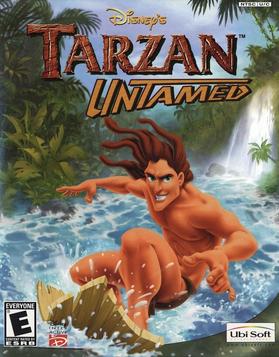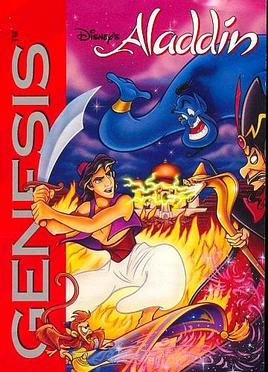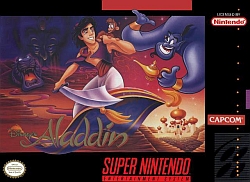JumpStart was an educational media franchise created for children, primarily consisting of educational games. The franchise began with independent developer Fanfare Software's 1994 video game JumpStart Kindergarten. The series was expanded into other age groups and beyond games to include workbooks, direct-to-video films, mobile apps, and other media under the ownership of Knowledge Adventure, which later assumed the name JumpStart Games.

The ClueFinders is an educational software series aimed at children aged 8–12 that features a group of mystery-solving teenagers. The series was created by The Learning Company as a counterpart to their Reader Rabbit series for older, elementary-aged students. The series has received praise for its balance of education and entertainment, resulting in numerous awards.

The Playroom is a video game first created in 1989 for DOS, Apple II and Macintosh computers. The game was compatible with the TouchWindow utility. It was ported to the Amiga and FM Towns computers in 1992 and 1994 respectively and then remade for Microsoft Windows and Macintosh in 1995. It was designed for ages 3 to 6 manufactured by Broderbund. A follow-up game titled The Treehouse came in 1991 as well as a sequel to this game, called The Backyard in 1993.

Tarzan: Untamed is a 2001 action-adventure game developed by Ubi Soft Montreal and published by Ubi Soft for the PlayStation 2 and GameCube.

Star Wars: DroidWorks is a 1998 edutainment computer game and the premiere title from LucasArts subsidiary Lucas Learning. It uses the same engine as LucasArts' previous title Star Wars: Jedi Knight. The creators aimed to create a game that would be both appealing and nonviolent. The game's original release date was moved up by months, which resulted in the development team cutting some planned game features.
Creative Capers Entertainment is an American animation studio founded by Terry and Sue Shakespeare with David Molina in 1989. Based in Altadena, California, it specializes in Flash and hand-drawn animation in various feature films, television series, commercials, CD-ROMs and video games.
The Magic School Bus is a series of educational software video games developed by Music Pen and published by Microsoft via their Microsoft Home brand. The interactive adventures are part of the larger franchise and based with The Magic School Bus original series books and public television series.

Tarzan is a 1999 platform game based on the 1999 film of the same name. Versions were released in North America for the Game Boy Color on June 28, 1999, PlayStation and Microsoft Windows on June 30, 1999, and Nintendo 64 in February 15, 2000. In 2012, the PlayStation version was made available on the PlayStation Store for PlayStation Vita.

Disney's Animated Storybook is a point-and-click adventure interactive storybook video game series based on Walt Disney feature animations and Pixar films that were released throughout the 1990s. They were published by Disney Interactive for personal computers for children ages four to eight years old. Starting from 1994, most of the entries in the series were developed by Media Station. They have the same plots as their respective films, though abridged due to the limited medium.

Aladdin is a Disney media franchise comprising a film series and additional media. It began with the 1992 American animated feature of the same name, which was based on the tale of the same name, and was directed by Ron Clements and John Musker. The success of the film led to two direct-to-video sequels, a television series, a Broadway musical, a live-action remake, various rides and themed areas in Disney's theme parks, several video games, and merchandise, among other related works.

Disney's Aladdin is a platform game based on the 1992 film of the same name developed by Virgin Games USA. The game was released by Sega for the Sega Genesis on November 11, 1993 as one of several games based on the film, including another game that was released in the same month by Capcom for the Super NES.

Disney's Aladdin is a 1993 platform game developed and published by Capcom for the Super Nintendo Entertainment System, based on the 1992 animated Disney film of the same name. Disney's Aladdin is a 2D side-scrolling video game in which the player controls Aladdin and his monkey Abu. It was designed by Shinji Mikami.
Disney's Print Studio is a series of crafts/design computer games released by Disney Interactive, which allows players to print various types of documents in the themes of its licensed property. The 1994 Aladdin game was the precursor to the Print Studio games to follow, and set in motion the template of how those games would work.

Anastasia: Adventures with Pooka and Bartok is a puzzle video game based on the 1997 animated film Anastasia. Developed by Motion Works, published by Fox Interactive and distributed by 20th Century Fox Home Entertainment, the title was released on November 25, 1997. It was produced by David Wisehart, who also served as voiceover director. The game had an estimated budget of US$800,000.
Tarzan is a Disney media franchise that commenced in 1999 with the theatrical release of the film Tarzan, based on the character Tarzan by Edgar Rice Burroughs.

Disney Learning: Winnie the Pooh comprises three titles: Winnie The Pooh Toddler, Winnie the Pooh Preschool and Winnie The Pooh Kindergarten. They are point-and-click educational video games developed and published by Disney Interactive and based on the Winnie the Pooh franchise. The titles were shipped by BAM! Entertainment.

Reader Rabbit Toddler is a 1997 educational video game developed by KnowWare and published by The Learning Company. It is part of the Reader Rabbit series.

Thinkin' Things is a series of educational video games by the Edmark Corporation and released for Windows and Mac in the 1990s. Entries in the series include Thinkin' Things Collection 1 (Formerly Thinkin Things) (1993), Thinkin' Things Collection 2 (1994), Thinkin' Things Collection 3 (1995), the adventure game Thinkin' Things: Sky Island Mysteries (1998), Thinkin’ Things Galactic Brain Benders (1999), Thinkin' Things: All Around Frippletown (1999) and Thinkin' Things: Toony the Loon's Lagoon (1999).

Reader Rabbit is a 1984 video game and the first of the long-running Reader Rabbit edutainment series. It was made by The Learning Company for Apple II and later for other computers. It also made use of the KoalaPad graphics tablet. The Connelley Group helped with the Atari 8-Bit conversion in 1984. A Talking version was developed for the Apple IIGS in 1989. An enhanced version was released for DOS on 1991. A Deluxe version was released in 1994 for Macintosh and Windows 3.x. In 1997, the game was remade for Windows and Macintosh under the title "Reader Rabbit's Reading 1".















